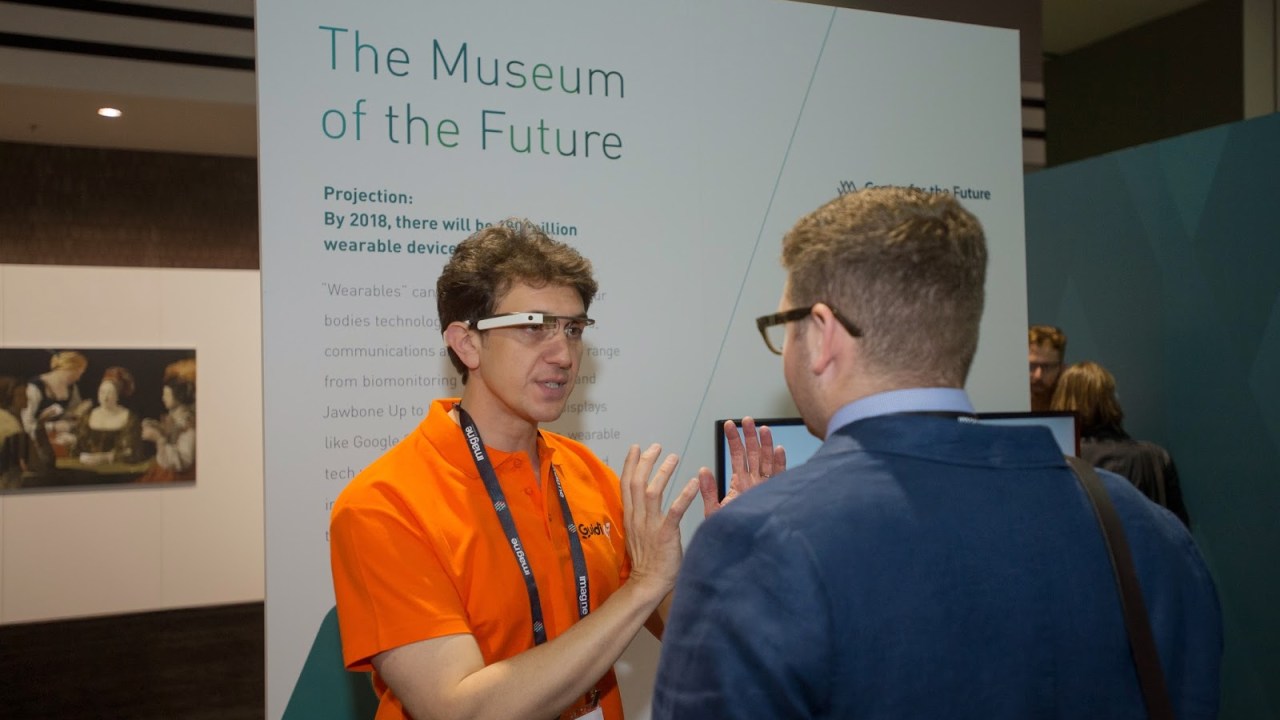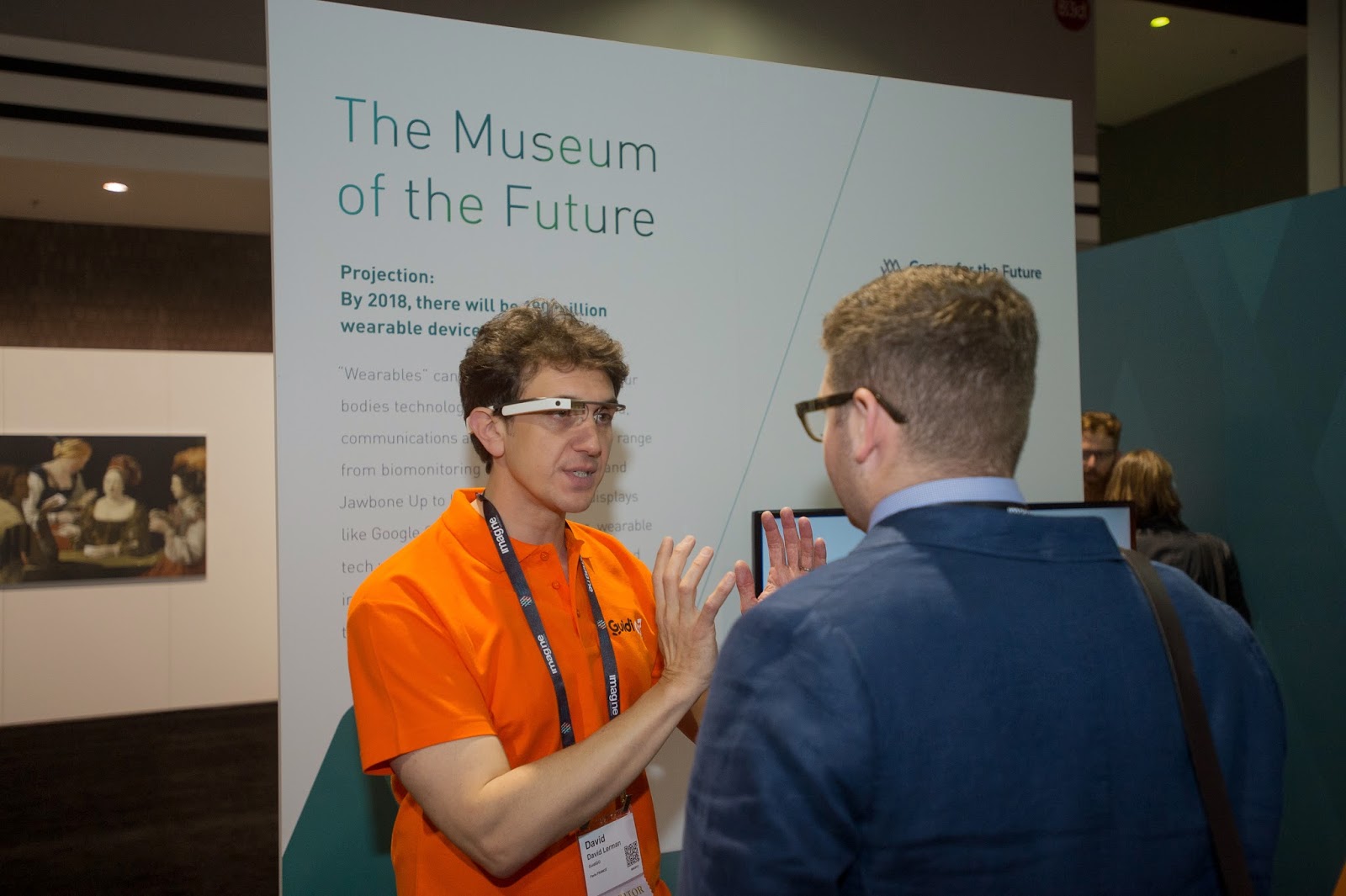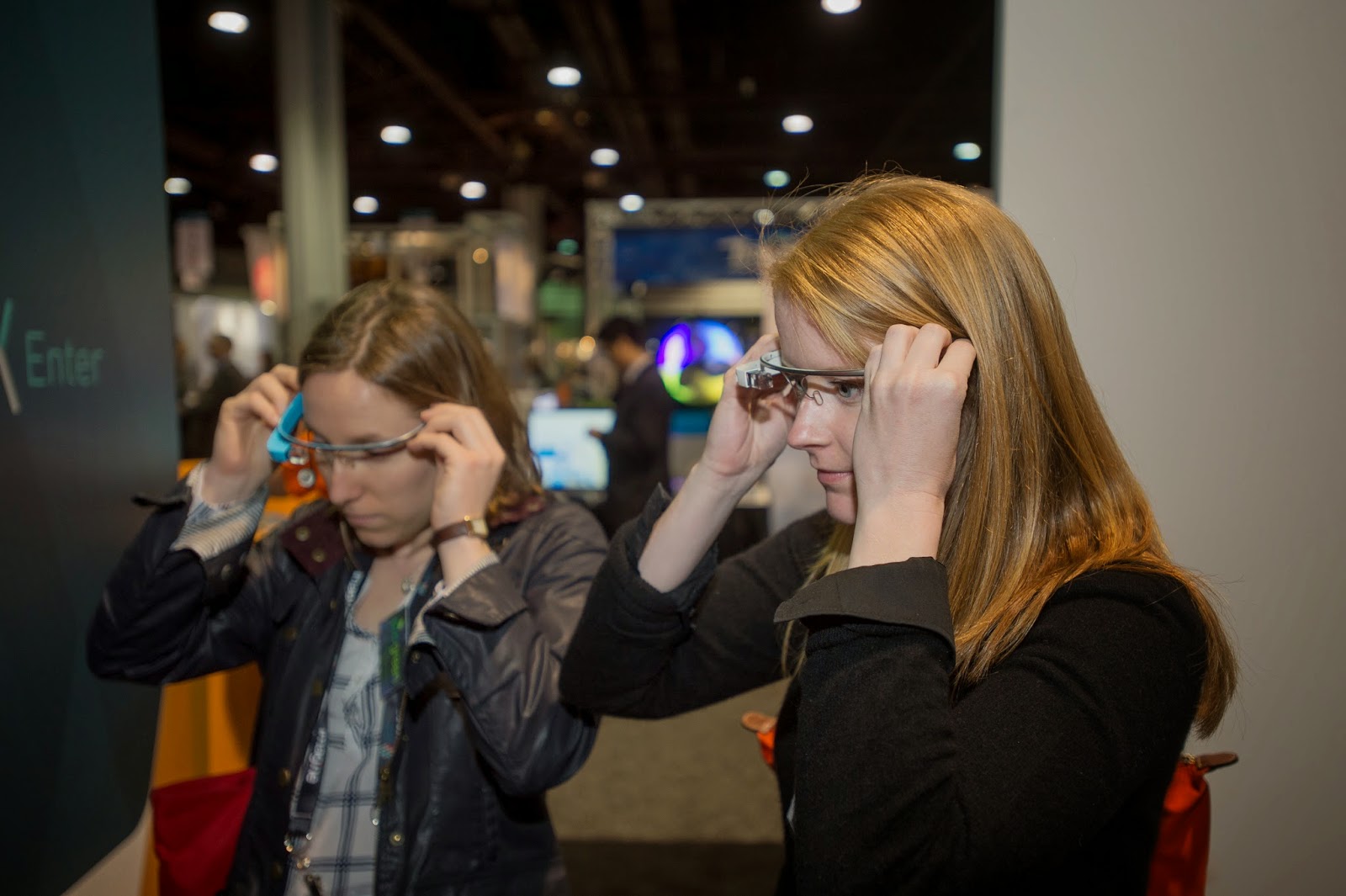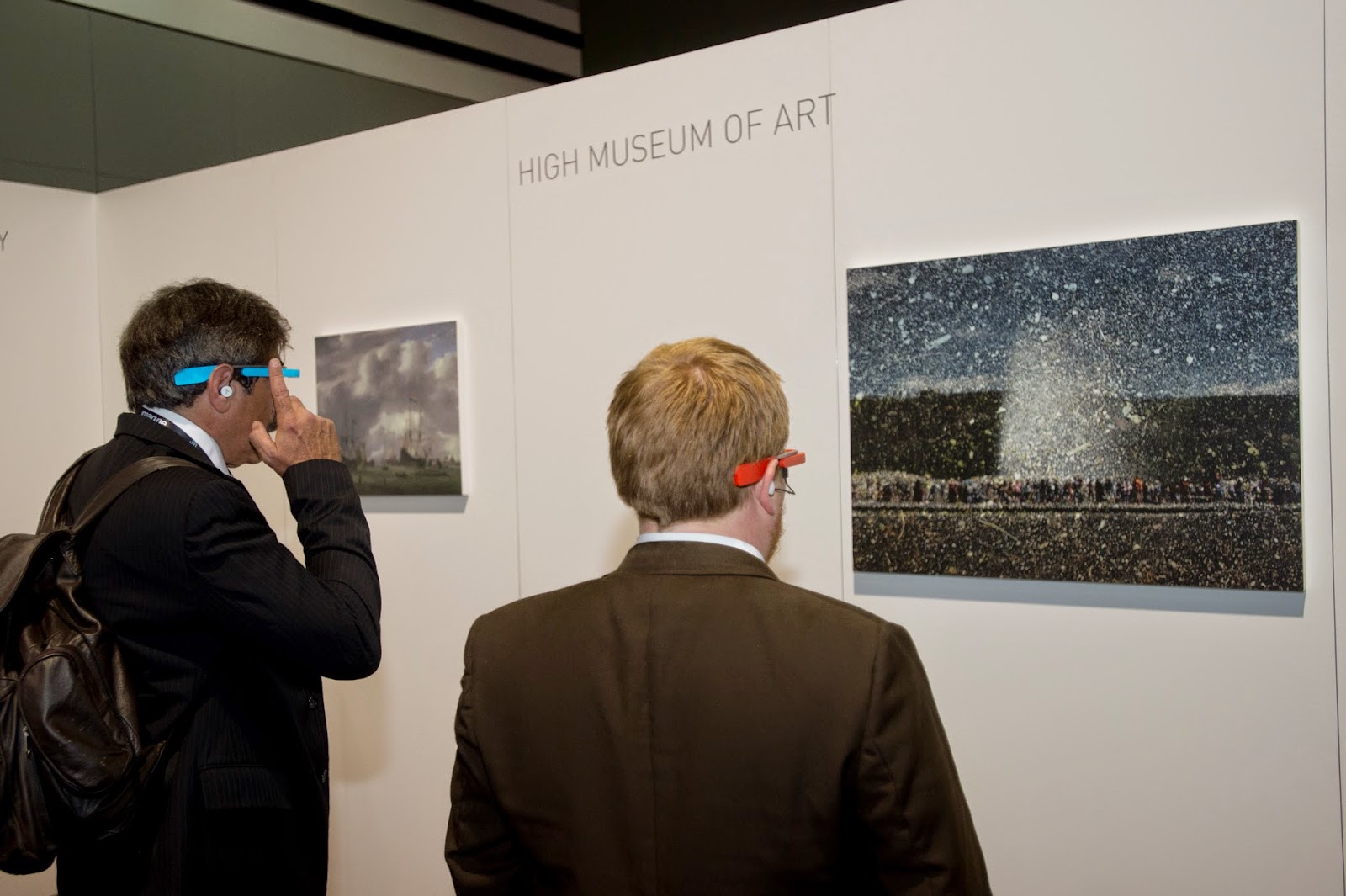
If you joined us for the annual meeting in Atlanta, you may have seen the queue in MuseumExpo for a small gallery plopped down in the midst of the hall. Working the line of folks waiting to don a bright blue, neon orange or distinguished black pair of Google Glass was Sylvea Hollis, project manager for CFM’s “Museum of the Future.” I’m lucky to have recruited Sylvea to assist with futuring while she finishes her PhD. at the University of Iowa in the History Department. (She has her Masters in History Museum Studiesfrom the Cooperstown Graduate Program and worked on various curatorial and education projects with museums ranging from the Birmingham Civil Rights Institute to the St. Eustatius Historical Foundation in the Caribbean.) You can follow her on Twitter @sil_ve_uh (which also tells you how to pronounce her name J.)
 On Monday, April 27th, The Museum of the Future opened as a mock-gallery created by the Center for the Future of Museums at the AAM Annual Meeting 2015. The project highlighted one of CFM’s most discussed trends in the field this year—wearable technology.
On Monday, April 27th, The Museum of the Future opened as a mock-gallery created by the Center for the Future of Museums at the AAM Annual Meeting 2015. The project highlighted one of CFM’s most discussed trends in the field this year—wearable technology. Professionals and people employed in industries that support museums came to try on Google Glass and follow a GuidiGO tour, that consisted of mini-exhibitions from six different museums (Computer History Museum, High Museum of Art, Michael C. Carlos Museum of Emory University, National Baseball Hall of Fame and Museum, Atlanta History Center, and the Atlanta Botanical Garden). While watching the first line form, I could not help but think of the field’s transformation from Charles Wilson Peale-styled cabinets of curiosity to pop-up galleries with art, history, and flora.
The Museum of the Future was but one example of our shift from places where visitors are told what matters most, to institutions that value everyday stories, and create space for people to enter on their own terms. Technology can help to enhance our work, but it is not a panacea. Hundreds of people stopped by and most wanted to talk about finding meaningful ways to be innovative while remaining true to their mission. I believe that the opportunities are endless. For example, technology has the potential to be a great way to help museum professionals reach new audiences, create more conversations in galleries, preserve collections, and forge diverse partnerships like in the often discussed STEM and humanities.
CFM Director Elizabeth Merritt outlined plans for the Museum of the Future in a previous blog post. She posed three primary questions:
- What roles can wearable technology play in the museum of the future?
- What could wearable tech do differently or better than handheld devices?
- What are the “killer applications” for Google Glass or other wearable tech in museums, for visitors or behind the scenes?
 We gauged visitor response mostly through conversations with people entering and leaving the gallery. Additionally, people were invited to leave comments on post-its and/or via Twitter (#cfmwearables15). Most people were thrilled by the opportunity to wear Google Glass and try out GuidiGO’s tour within the museum-styled exhibit. Their enthusiasm was reflected not only in their conversations, but also in their body language. Many had a wide gaze while reading the exhibition statement and a posture that leaned in toward the entrance. I noticed open hands and strangers talking about their institutions while in line. For me, these cues pointed to visitor’s desire to stay connected to people and place their work—education, curatorial, and or design—at the center of the experience. I believe that the future of the field’s relationship to technology and innovation can be found in type of conversations people held while in line.
We gauged visitor response mostly through conversations with people entering and leaving the gallery. Additionally, people were invited to leave comments on post-its and/or via Twitter (#cfmwearables15). Most people were thrilled by the opportunity to wear Google Glass and try out GuidiGO’s tour within the museum-styled exhibit. Their enthusiasm was reflected not only in their conversations, but also in their body language. Many had a wide gaze while reading the exhibition statement and a posture that leaned in toward the entrance. I noticed open hands and strangers talking about their institutions while in line. For me, these cues pointed to visitor’s desire to stay connected to people and place their work—education, curatorial, and or design—at the center of the experience. I believe that the future of the field’s relationship to technology and innovation can be found in type of conversations people held while in line. Visitors had questions about the design, use, and personal privacy. But, most of their discussions concerned ways to honor the objects without letting new gadgets a focal point. There were also questions about accessibility. Some wondered if Glass would ever create a version for left-eye dominant people or that could be used wholly through voice activation. Of the things that visitors liked, many shared that they loved being able to move through a gallery on their own terms, having hands free, being able to talk with others, and knowing that they could craft tours for their own institutions using similar software.
Final Thoughts: It isn’t just cutting edge, it’s bleeding edge…
 There may be questions of how Google Glass and other forms of wearables will be used in the future, but there is no question of if they will be around. The potential benefits are far too great to ignore. Which types of wearables will exist in the future and their most popular use remain unknown. For the two and a half days that the mock-gallery was on display, museums stood at the forefront of innovation. We are not the only industry facing the technology question. But, the steps that hundreds made as they entered the Museum of the Future marked what I believe is an important move in the right direction.
There may be questions of how Google Glass and other forms of wearables will be used in the future, but there is no question of if they will be around. The potential benefits are far too great to ignore. Which types of wearables will exist in the future and their most popular use remain unknown. For the two and a half days that the mock-gallery was on display, museums stood at the forefront of innovation. We are not the only industry facing the technology question. But, the steps that hundreds made as they entered the Museum of the Future marked what I believe is an important move in the right direction. This project would not have been possible without an amazing team. A big thank you to:
Fabrication, Design, and Build Companies
Museums
Atlanta Botanical Garden
Atlanta History Center
Computer History Museum
High Museum of Art
Michael C. Carlos Museum
National Baseball Hall of Fame and Museum
And to the Met’s Neal Stimler for serving as a tour guide to the wearable future throughout the demo.








